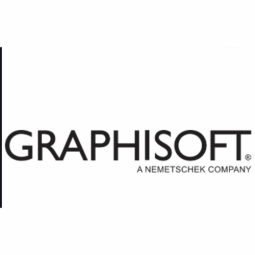Technology Category
- Sensors - Optical Sensors
Applicable Industries
- Buildings
- Education
Applicable Functions
- Product Research & Development
Use Cases
- Building Automation & Control
- Smart Lighting
About The Customer
The customer in this case is the community of Higashi-Matsushima, Japan, particularly the students, staff, and parents associated with Miyanomori Elementary School. The community had suffered a significant loss due to the Tohoku earthquake and tsunami in 2011, and the rebuilding of the school was a crucial part of their recovery process. The new school building was not just a place for education, but a symbol of hope and resilience for the community. The customer also included the architectural firm, Coelacanth K&H Architects, a team of 14 professionals led by Hiroshi Horiba and Kazumi Kudo. The firm is known for its commitment to making the most of available conditions and passing the history of the people and the place to future generations.
The Challenge
The Miyanomori Elementary School in Higashi-Matsushima, Japan, was devastated by the Tohoku earthquake and tsunami in 2011. The disaster resulted in significant loss of life and property, particularly in Nobiru, a suburb that was almost entirely destroyed. The rebuilding of the school was not just a construction project, but a symbol of hope and resilience for the local community. The challenge was to design a new school building that would uplift the community's spirits and provide a positive outlook for the local children's future. The site chosen for the new school was covered with dense, neglected trees, shrubs, and bushes, which needed to be transformed into a welcoming and diverse woodland. The architectural firm, Coelacanth K&H Architects, faced the challenge of creating a design that would serve as a backdrop to people's activities and not just as a monument.
The Solution
Coelacanth K&H Architects utilized Building Information Modeling (BIM) technology to design the new school building. BIM allowed the architects to visualize the end result of the structure, which was particularly challenging due to the assembly of more than 5000 small timber pieces. Using BIM, the architects were able to communicate their design intent to the community, showing them how they would be able to see the sea on the left and the mountains on the right from inside the building. They also used a simulation to demonstrate how sunlight would shine through the windows. BIMx, a BIM tool, was used to facilitate collaboration among the carpenters, builders, and building managers. It allowed them to check the model and the space, identify potential problems, and address concerns in advance of the construction.
Operational Impact

Case Study missing?
Start adding your own!
Register with your work email and create a new case study profile for your business.
Related Case Studies.

Case Study
Energy Saving & Power Monitoring System
Recently a university in Taiwan was experiencing dramatic power usage increases due to its growing number of campus buildings and students. Aiming to analyze their power consumption and increase their power efficiency across 52 buildings, the university wanted to build a power management system utilizing web-based hardware and software. With these goals in mind, they contacted Advantech to help them develop their system and provide them with the means to save energy in the years to come.

Case Study
Intelligent Building Automation System and Energy Saving Solution
One of the most difficult problems facing the world is conserving energy in buildings. However, it is not easy to have a cost-effective solution to reduce energy usage in a building. One solution for saving energy is to implement an intelligent building automation system (BAS) which can be controlled according to its schedule. In Indonesia a large university with a five floor building and 22 classrooms wanted to save the amount of energy being used.

Case Study
Powering Smart Home Automation solutions with IoT for Energy conservation
Many industry leaders that offer Smart Energy Management products & solutions face challenges including:How to build a scalable platform that can automatically scale-up to on-board ‘n’ number of Smart home devicesData security, solution availability, and reliability are the other critical factors to deal withHow to create a robust common IoT platform that handles any kind of smart devicesHow to enable data management capabilities that would help in intelligent decision-making

Case Study
Protecting a Stadium from Hazardous Materials Using IoT2cell's Mobility Platform
There was a need for higher security at the AT&T Stadium during the NFL draft. There was a need to ensure that nuclear radiation material was not smuggled inside the stadium. Hazmat materials could often be missed in a standard checkpoint when gaining entry into a stadium.

Case Study
Commercial Building Automation Boosts Energy Efficiency
One of the challenges to building automation is the multitude of non-interoperable communications protocols that have evolved over the years. Buildings have several islands of automation. Bridging the islands of different automation without losing the considerable investment in each specialized control network is the main focus in this solution.








